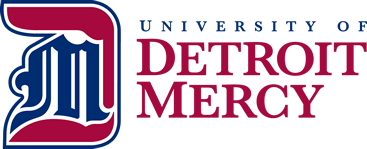Community
University of Detroit Mercy is committed to ensuring that all students have an equal opportunity to participate in the university's programs, benefits, and services, including those delivered through electronic and information technology.
According to federal law, accessibility means a person with a disability is afforded the opportunity to acquire the same information, engage in the same interactions, and enjoy the same services as a person without a disability in an equally effective and equally integrated manner, with substantially equivalent ease of use. The person with a disability must be able to obtain the information as fully, equally and independently as a person without a disability.
The full, approved policy is available here (PDF).
Universal Design of Instruction is a framework focused on making learning available to all students regardless of needs or learning differences. These guidelines provide a basic framework to help you think about best practices in making your online course accessible.
Questions
If you have questions please contact the Instructional Design Studio via email (ids@udmercy.edu) or phone (313-578-0580).
Visual Design
- Course navigation makes it easy for students to find what they need.
- There is a consistent visual theme. (e.g. color scheme, page layouts)
- Units have a consistent layout week after week so that students don’t have to re-learn to navigate the course each week.
- The course has descriptive headings and links. (e.g. using “Week 3 Assignment Submission Link” instead of “Assignment Submission”)
- Fonts are uniform and sized appropriately. (12 pts or larger for content, 16 pts or larger for headings)
- Color usage is accessible. (i.e., color alone is not used to convey information, there is enough contrast, colors are not too similar)
Video & Audio
- All video and audio content must be close captioned (CC) or transcribed.
- Instructors should ensure the accuracy of captioning / transcription when feasible.
- We recommend using Microsoft Stream, which will generate captioning automatically. You'll find instructions for using Stream here.
Images & Text
- Alt text (a word or phrase that tells viewers the nature or contents of an image) is provided for all digital images.
- Course documents are in accessible formats. (HTML or Word files, PDFs that can accessed via "Read Out Loud" function)
Links & File Names
- Underlined text is avoided aside from active links.
- Phrases associated with links, like “click here”, are not used in general text.
- Labels (.pdf, .docx, .xls) are included in the names of the links to documents.
Information & Student Support
- The syllabus uses HTML or an accessible PDF or Word format
- Students know exactly where to get started when they enter a course. (A folder named "Start Here" that provides an overview of the course is a common way to do this).
- The course provides a tutorial or instructions for course navigation.
- You have included and verified that you have up to date links to support services:
- The Student Success Center
- Student Disability & Accessibility Support Services
- The Library
- The Instructional Design Studio
- IT Services
- You have clear objectives for units or sections written in student centered language. (e.g., "By the end of this unit you will be able to ...")
- Students are provided with specific and descriptive criteria for assignment expectations.



